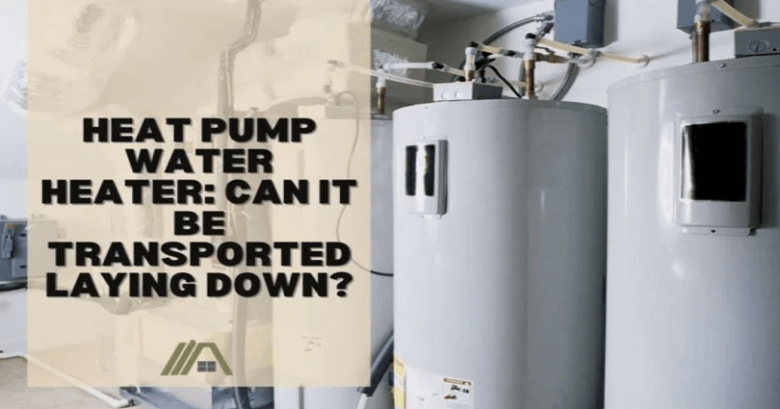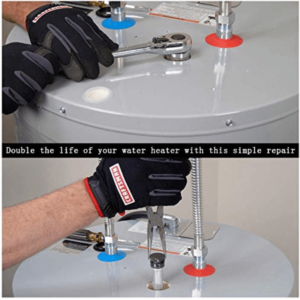There is a lot of discussion on whether water heaters can be transported lying down. However, the most passionate opinions occur when dealing with heat pump actions. The argument is on damaged coils, broken glass liners but this is not the main issue.
There is a difference of opinion among brands, merchants and professionals and they have different instructions on heat pump water heaters and how to take them home. Some advice yes but do it carefully, while the rest are of the opinion that you are wrecking your appliance before it gets home. So, which is the right?
The compressor of heat pump’s system has oil that leaks out when lying down. If it switched on in this condition, it will damage the compressor. However, the appliance can be angled or placed flat, in certain circumstances. Before you use it, just keep the unit upright for a few hours.
Recommendations of Manufacturer and Professional
All manufacturers do not provide information related to heat pump water heater transport in the owner manuals. For instance, Rheem do not have it. however, Home Depot says that transporting the Rheem unit on its back will not result in problems.
Others strictly say avoid it. for instance, Stiebel Eltron says that they should not be lied down or be tilted past 45°. They also say, however, that if the unit has been laying down, then there is one way to fix it, leave it in the upright position for minimum one hour before you start setting it up to run.
Then there are some manufacturers that also support the transportation while laying down. For instance, GE appliances support it by saying that you can transport Geospring on its back.
Here are some professionals on plumbing forum, transporting them on their sides should be avoided.
These are different opinions of different people. But since they do not match with each other, let’s have a look at them deeply so you can make your own decision.
Secure to Move Regular Water Heaters on Side
In my opinion, when dealing with regular water heaters, it is safe to transport them on their side, regardless of what is manufacturer’s opinion. Most plumbers will also back it and guide you it is ok to transport your water heater lying down, when you are doing it, careful while driving, and strap and cushion the appliance properly. If it is new in the box, the moving can be done securely, and you will not face any issue to transport it.
Risk With Heat Pumps
Transporting an electric or gas water heater compel you to think about the denting the casing and ensure that controls do not get damaged. However, when dealing with heat pump water heater, you are dealing with a different system. That is the reason it is very risky to transport this appliance.
There is a coil heating system in a heat pump water. You may face problems with these coils if transporting the water heater laying down and the functions of the machine can also be disturbed.
When you place the appliance horizontally, the top of the water heater has compressor’s oil that runs into the condenser coils. If there is no oil in the compressor, it will cause the component to burn when you turn on the heater.
If you are curious to know more about
how the heat pump is affected by non-upright positioning, you have to read our article on Heat Pump: Can It Be Transported Laying Down?
Non-Upright Transport Options
It is preferable to move a top-heavy heat pump water heater in a non-upright position. This type of water heater contains a portion above the tank that has different parts in the heating system, adding more weight as compared to other models which don’t have.
If your unit is left upright for 4 hours, the longer the duration is, the better it is, after transport, there will be no stress to turn it on.
You may lose the warranties from the seller if he notices that you transported it on its side and it is a valid point to consider as this action could have led to the damage or discussed.
Transport at a 45° Angle
You can keep the oil in the compressor by transporting a heat pump water heater at a 45° angle.
You should avoid transporting a water heater when it is lying on its controls or pressing against any external appliances. It’s back should not be on the same side where any other fixture is placed.
Prevent the unit from being placed on a single edge. It can result in a lot of pressure on the appliance while transporting it and can cause the dent on the tank. However, you can relieve the pressure if you can transport it safely.
/Use the rachet straps to strap the heater such as the AUGO Rachet Straps), in the lower and upper sections (same as you would be strapping it if you have been in areas which are more likely to face earthquake. All you need is to ensure that the straps can fit into the cargo hooks of your vehicle.
To cushion between the appliance and any pressure point (such as straps), you can use towels, blankets, comforters or similar things. These things can also be used around the unit to wedge it in place.
If your appliance is leaned against a hard, smaller edge, you might want to use a sheet of wood with the length of the heater. It will distribute the pressure from the single point where the unit is inclined.
Transport Heater on Its Back
Ensure that the heater is on its if you want to move it lying down, or it will cause damage to the vital fixtures available on the front of the heater.
If the appliance has instructions from the manufacturer for horizontal transport, you should follow the guidance. For instance, as discussed earlier, GE offers instructions to put the Geospring on its back.
Or you can place it on its back and give the support, strapping and cushioning to avoid moving, sliding, and bumping. When you tip it over, you have to be more careful. Gently set it down with cushioning to prevent the damage of elements, coils, and insulation lining on the appliance.
Additionally, make sure the whole appliance is supported when lying down. You definitely want to prevent the unit from dangling in midair (for instance, off the back of your pickup) as it can result in damage of the unit by causing bending as the pressure of water heater will be bore by itself.
Also Known as Hybrid Water Heater
Heat pump water heaters are also called hybrid water heaters. The reason behind it is that they have the refrigerant system that provides ambient heat to the water, it does have a backup too.
Hybrid water heaters also contain a 2nd electrical heating system. It shows that they have the essential electrical element that helps you with the hot water supply with electricity.
Your water supply demand is the reason you may need another system.
Heat pump water heaters are designed with longer recovery period (up to 3 hours) as compared to gas and electric water heaters. It indicates that the heat pump system needs more time to heat the next round of water after you have used it. Consequently, you may need additional help when hot water usage is at its climax, especially when there are more inhabitants in the house.



